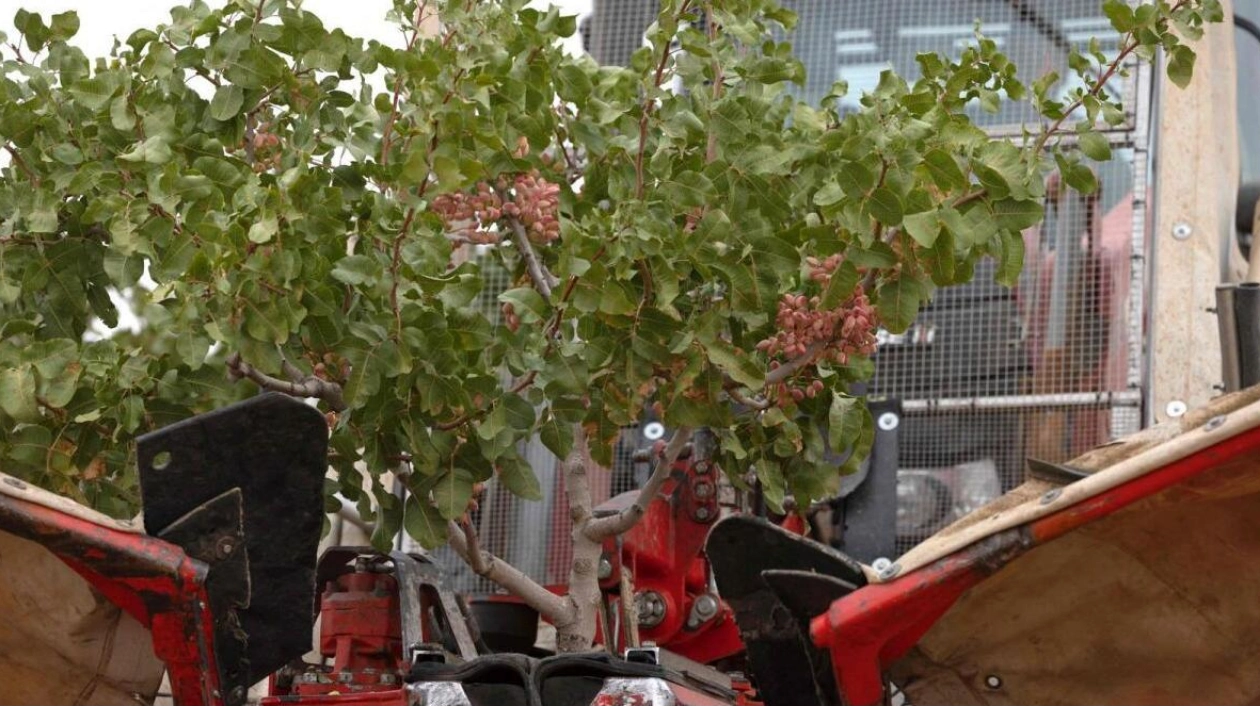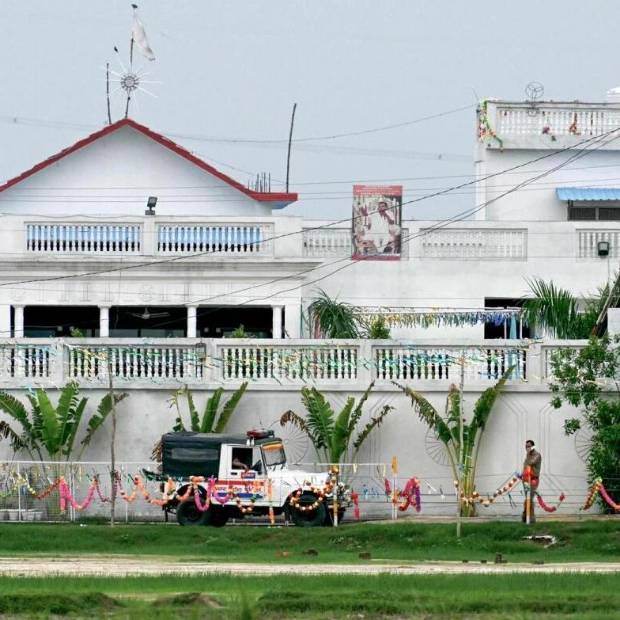Two decades ago, Miguel Angel Garcia cultivated grapes and grains on his farm in central Spain, following in the footsteps of his father and grandfather. Today, he grows pistachios—a more profitable crop that can endure the increasingly frequent and severe droughts in Spain. Garcia harvests between 10 to 20 tonnes of the green nut annually from his 64-acre farm in Manzanares, Castilla-La Mancha, part of a growing trend in pistachio production across Spain.
"Wine and cereals were no longer viable," explained the 58-year-old, who first planted pistachio trees in 2007. "If I hadn't diversified, I wouldn't have been able to sustain my farm." Behind him, an electric harvester attached to a small pistachio tree shook it vigorously, causing nuts to drop into a large canvas spread below, resembling an inverted umbrella.
Pistachio trees, originally from the Middle East, are described as "resistant" and "well-adapted" to the local climate, characterized by hot, dry summers and cold winters. According to agriculture ministry data, the land dedicated to pistachio cultivation in Spain has surged nearly five-fold since 2017 to 195,000 acres by 2024. This makes Spain the largest pistachio producer in Europe by area, ranking fourth globally after the United States, Iran, and Turkey.
Most pistachios are grown in Castilla-La Mancha, Extremadura, and Andalusia, regions grappling with water scarcity due to climate change. "This crop thrives in a desert region and is far better suited to our new climate conditions," said Mario Gonzalez-Mohino, an agricultural engineer and director of the specialist website Pistacho Pro. Spain recorded its hottest August this year, with average temperatures of 25°C (77°F), and the national weather agency forecasts 2024 could be one of the warmest years on record.
Spain's annual pistachio production, currently around 9,000 tonnes, is "still modest" but expected to rise sharply as most new plantings have yet to yield. It takes at least seven years for a newly planted tree to bear fruit. Joaquin Cayuela Verges, secretary-general of the Pistamancha cooperative, which includes 51 pistachio farms, noted the boom is just beginning. "Demand is strong, and the sector is dynamic," he said. The cooperative, based in Pozuelo de Calatrava, sells 90% of its production in Europe, primarily to France and Germany, at €10-11 per kg.
To support its rapid growth, Pistamancha is investing €5 million in a new facility for sorting, peeling, and drying pistachios, capable of processing one million kg annually. Despite concerns about overproduction, industry insiders see little risk, as domestic production falls short of demand. "Pistachios are still mostly imported in Spain," said Gonzalez-Mohino, predicting a "promising future" for local producers. While pistachios are commonly enjoyed as snacks, they also feature in Middle Eastern cuisine and various food and cosmetic products.
Garcia cautioned, "Many dream of quick riches, but planting pistachios requires patience. You won't see returns for several years." He has invested in this crop for 15 years and only now can he recoup his expenses and make a living. "Pistachios are all about patience," he concluded.






